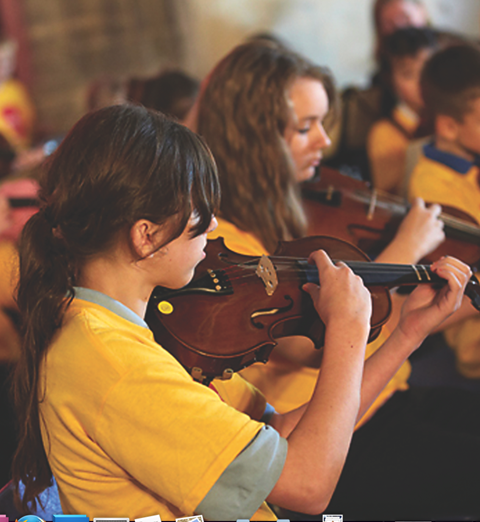The results of Sistema-based social programmes are almost impossible to quantify – but as Jonathan Govias argues, the potential of ‘the system' is boundless

With the British government investing millions of pounds into the development of a national El Sistema network while simultaneously enforcing a policy of austerity, the new question emerging about El Sistema in England has become: ‘Is it worth it?’ But precisely like the past big question about El Sistema – whether it should be adopted or adapted – this inquiry also ignores the fact that there’s no conclusive answer yet to what precisely ‘it’ is. José Antonio Abreu, the founder of El Sistema, has resolutely resisted attempts to define its practice, with the result that when the question ‘What is Sistema?’ is asked, at least three possible responses can come to mind.
The first and simplest answer is the organisation, the Venezuelan national network of youth orchestras from which the name ‘The System’ is derived. This is the Sistema made famous by the 2007 BBC Proms performances, and the Sistema of exuberant young orchestras captivating audiences across the globe.
The second El Sistema is the concoction of its international mythologisers. This Sistema is defined not by its extremely diverse practices, but by the rhetoric of its evangelists. Good intentions have yielded extravagant promises: this is the Sistema that will eliminate crime, lift millions out of poverty, or close the class divide. While these programmes have delivered much good, if largely conventional music education, their advocates have at times set the bar perilously high for all music educators.
Then there’s the third Sistema, which is nothing more – and nothing less – than the idea that music can transform people cognitively, emotionally, even spiritually, just as much as it can socially. This idea, this promise, so logical and plausible in theory, remains largely uncharted territory in practice.
The puzzle presented by Abreu’s reticence in describing El Sistema is reminiscent of another historical enigma. In the margins of his notebook, the mathematician Pierre de Fermat wrote of his discovery of a proof for a pivotal mathematical thought, yet failed to disclose the proof itself. Until it was solved, 358 years later, that unproved theorem provoked more inquiry, exploration and advancement than a bald, or potentially erroneous proof ever could have.
By refusing to issue an authoritative statement on what constitutes El Sistema, Abreu has granted music educators the liberty to explore this idea unfettered by preconception or tradition. Some have interpreted this space as a vacuum and therefore cling to mirroring superficialities of practice, such as cardboard violins (see The Strad, March 2011). Others view it as carte blanche to describe all forms of music education as producing pro-social outcomes. Between these extremes of copying and chaotic opportunism lies the pursuit of the proof, the search for the mechanics of practice that, regardless of geographic location, target population, musical genre, or instrumental or choral modes, will deliver on Abreu’s conjecture.
Like Fermat, Abreu has offered us a hint. Social action through music demands completely new modes of education: it demands social learning. The most provocative work in this field hasn’t been done by music educators, but by a computer scientist named Sugata Mitra, on faculty at the University of Newcastle. Mitra has devoted almost two decades to the study of the extraordinary motivation and accomplishment of students who learn through social interaction, rather than teacher intervention. At its heart, his work revolves around the massive divide between teaching and learning, and the boundless potential that emerges when the focus is placed squarely on the latter. If Sistema is to deliver on its promise, this is where it must start.
The British government’s funding of Sistema programming through the In Harmony initiative may have raised questions in some quarters, but internationally it represents a comparatively rare example of prudent government investment. There has been no political attempt to dictate day-to-day practice beyond a broad framework, no move to define a single mandatory outcome, and the existing infrastructure has been relatively safeguarded. Crucially, the government has given its target programmes the space and the resources to explore Abreu’s idea to its fullest. There is a time limit, and there remains the accountability concomitant with all public monies, but if the programmes focus their resources on asking the right questions, there may well prove to be no limits to the system.
This article is published in The Strad, January 2014 issue. Subscribe to The Strad or download our digital edition as part of a 30-day free trial.


























No comments yet